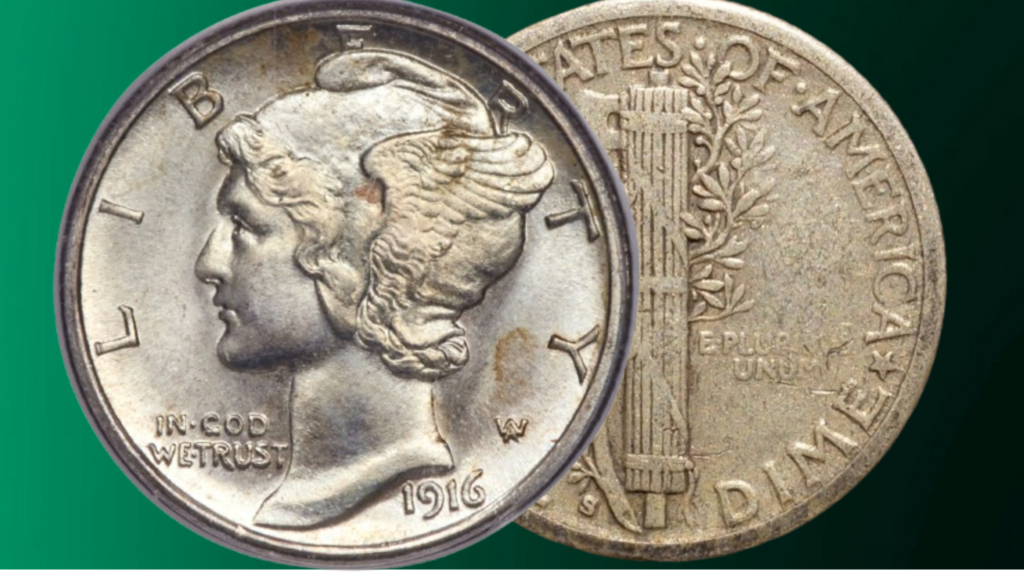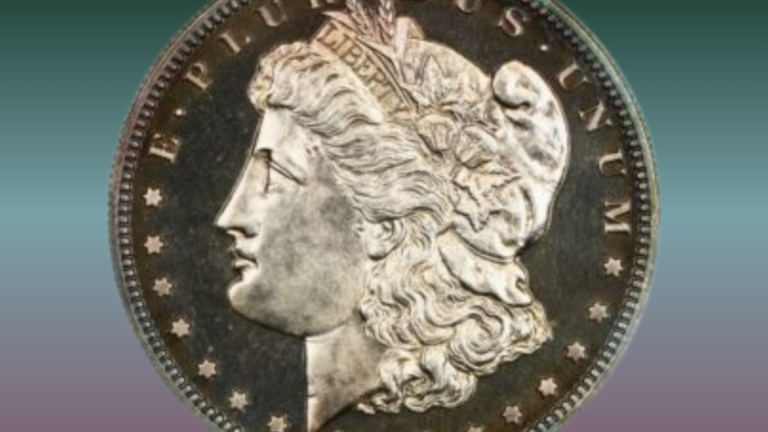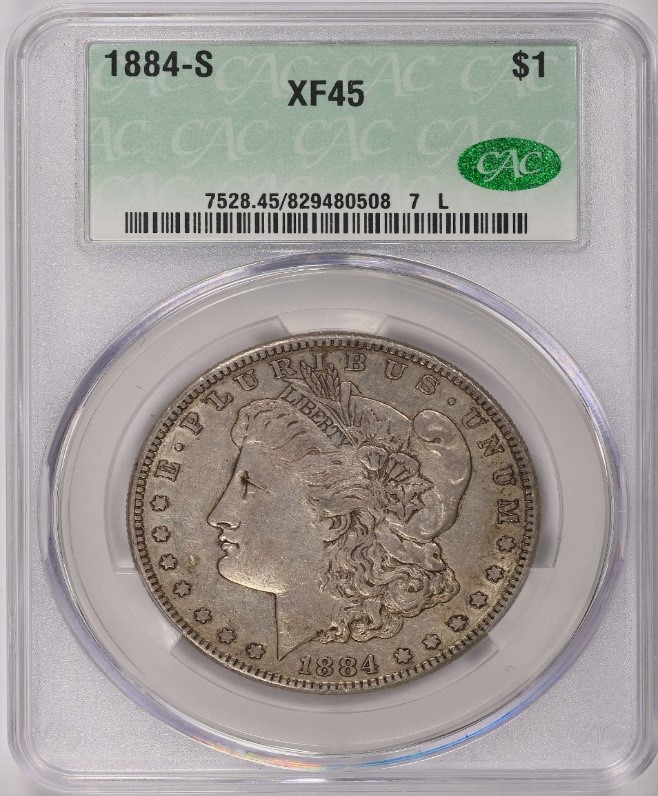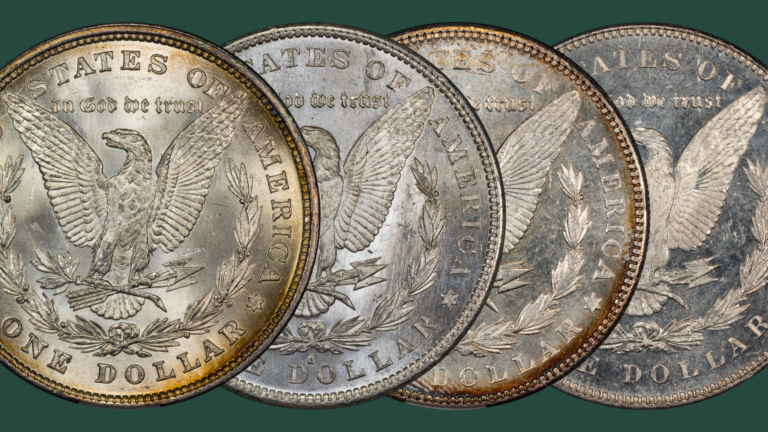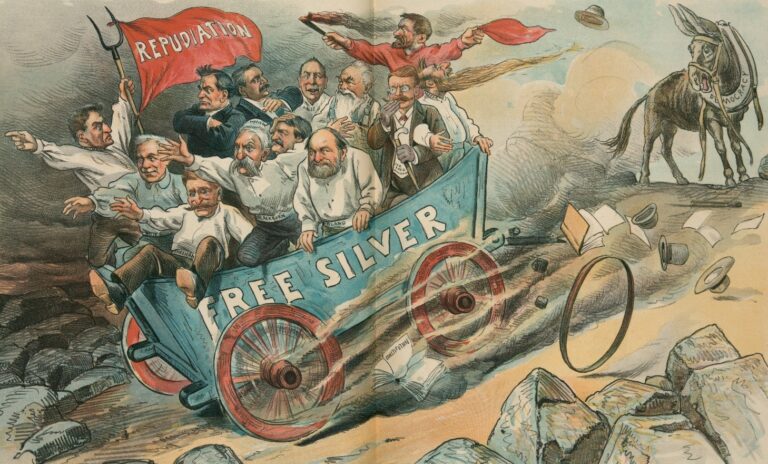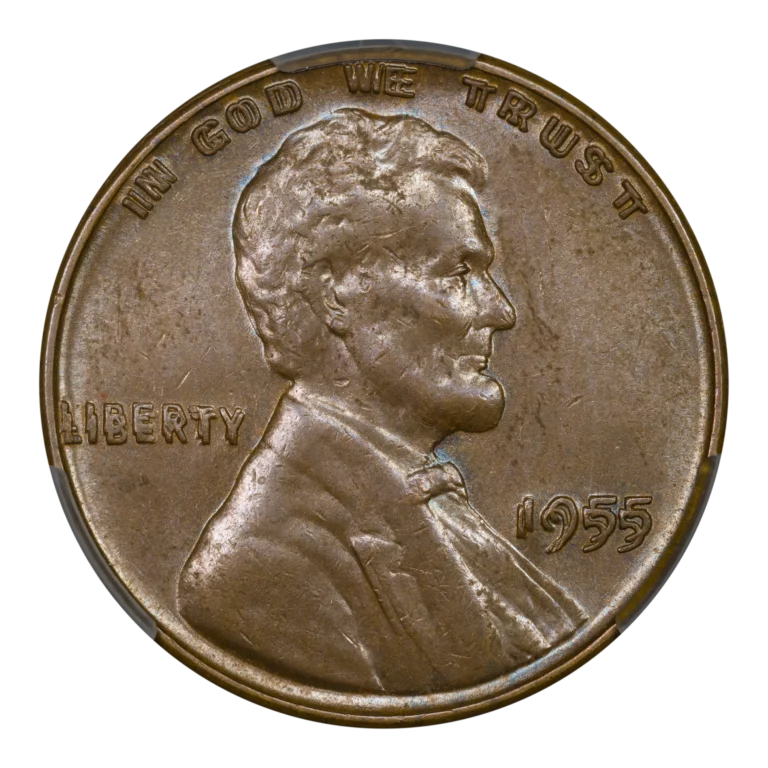by Greg Reynolds
More than a dozen MS-65 grade ‘late date’ Mercury dimes (Mercs) are estimated to retail for less than $50 each, and most coins in the whole set can be purchased for less than $500 each in MS63 or higher grades. A gem (MS-65 and higher grade) Merc set is much more affordable than news headlines about condition rarities suggest. While some collectors pay megabucks for MS-67 or higher grade Mercury dimes, MS-65 grade representatives of the same dates are usually not extremely expensive.
If two dates are excluded, a set of gem quality (MS-65 and higher grade) Mercury dimes may probably be completed without spending as much as $5000 on any one coin, with almost all the coins costing from $35 to $1000 each. Indeed, in MS-65 grade, only twelve to seventeen dates would be likely to cost more than $1000 each, and MS64 grade representatives of those dates can usually be purchased for less than $500 each. Overdates and obscure varieties are excluded from a set ‘by date’ (and mint location).
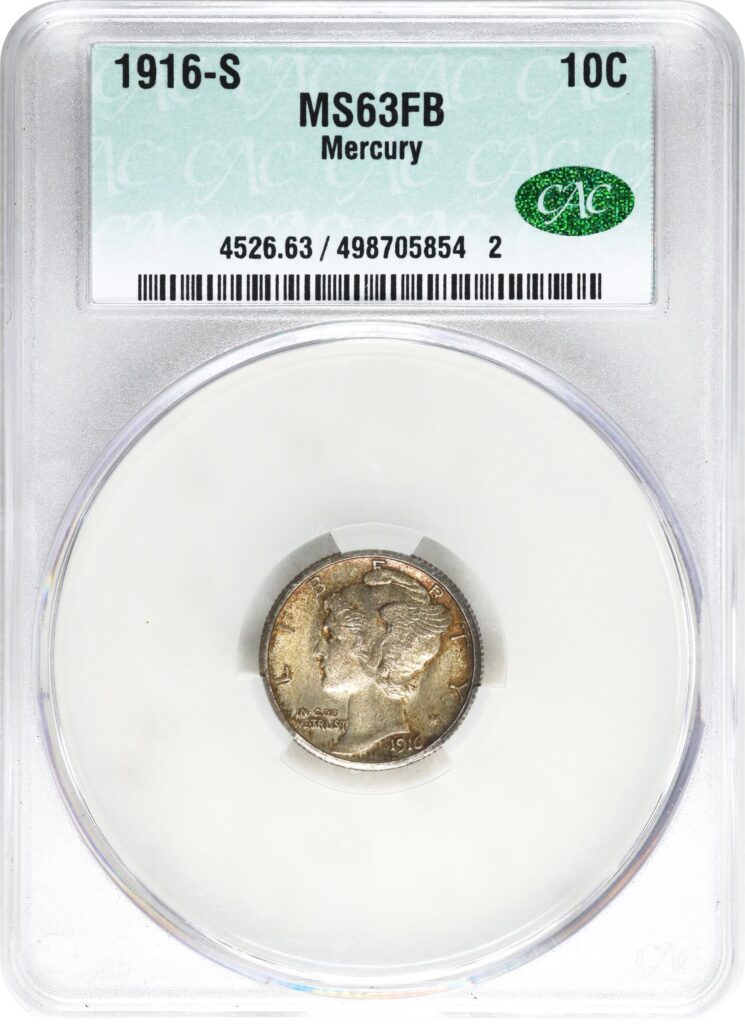
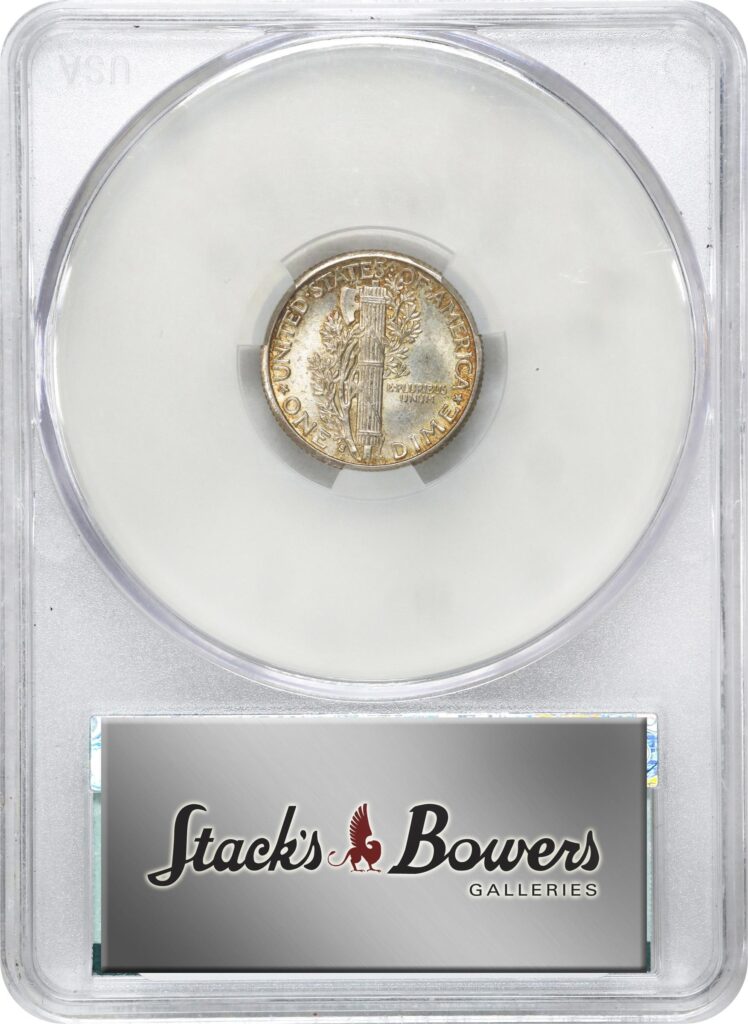
All the dates from 1916 to 1945 cannot be discussed in a short time. In this discussion, the focus is on Mercury dimes dating from 1916 to 1919, several of which are modestly priced.
Those who cannot afford MS-65 or even MS-64 grade representatives of better dates may usually buy MS-63 grade representatives of those dates for amounts that are much lower than the costs of MS-65 grade coins of the same dates. A fun and worthwhile challenge is to collect really neat, MS-63 to MS-66 grade Mercury dimes that do not have ‘Full Bands’ (FB) designations.
The ‘Full Bands’ Controversy
Leading grading services designate applicable Mercury dimes as having ‘Full Bands’ (FB). For many dates, prices for gem quality (MS65 and higher grade) Mercury dimes with a FB designation are incredibly greater than prices for corresponding coins that have been assigned the same numerical grade from the same grading service. Are these premiums logical and sensible?
The bands in question are horizontal and are in the center of the reverse (back of the coin). If grading services did not have ‘Full Bands’ (FB) designations, most collectors and dealers would hardly notice these bands and few would care whether they are very well struck. As these amount to such a small part of the reverse design, why should it matter whether they are very well formed? Also, there are several bands in the design, not just the central reverse bands that are considered for a ‘FB’ designation.
Many U.S. coins have shields in their respective designs, and such shields often have horizontal and vertical lines within them. Do coin collectors and researchers care much about the fullness of the lines in the shields on bust coins, shield nickels or Barber halves?
The so-called ‘Full Bands’ (FB) designations are extremely important in a financial sense, as a coin receiving a ‘FB’ designation might be worth dramatically more than the same coin would be worth without such a designation. There are other variations in the striking and appearance of Mercury dimes, however, that are not noticed by many collectors and are not designated by grading services, at least not usually.
Ignored Minting Varieties & Anomalies
The late David Lange, in his book that was published by DLRC Press (Virginia Beach) in 1993, explained that there were different obverse hubs used in 1916, 1917 and 1918. A hub is used to make dies, and dies are used to strike prepared blanks (planchets) to produce coins.
Late in 1916, according to Lange, some 1917 obverse dies were made with the 1916 hub with a 1917 date. During 1917, another hub was used. There are thus 1917 Mercury dimes that stem from different obverse hubs. There are several differences, all of them subtle, the most noticeable of which would be in the detail of Mercury’s headwing. While some collectors will find that it is fun to identify such varieties, there is not a need to know about them to complete a set ‘by date.’
David Lange adds that the 1917 ‘Hub of 1917’ Mercury dimes are in lower relief than the 1916 and 1917 ‘Hub of 1916’ dimes. He implies that the artistic merit of the design is more apparent in coins struck from dies that were imparted by the first pair of hubs. In my opinion, these distinctions are rather subtle. I encourage collectors, though, to decide for themselves whether such minting variations are important. Lange suggests that the ‘Hub of 1917’ may have been unsatisfactory as still another obverse hub was used to make obverse (head) dies in 1918.
Although dies from different early hubs are identifiable without too much work, it would be extremely tedious to identify many dies that were struck from the same hubs. Indeed, it would be painful to attempt to collect Mercury dimes by die pairing. During a calendar year at any one of three mints, it was typical for more than one hundred obverse and more than one hundred reverse dies to be used to strike Mercury dimes. One pair of dies could have struck more than 100,000 Mercury dimes without showing substantial signs of die wear.

Show off Your Collection in the CAC Registry!
Have CAC coins of your own? If so, check out the CAC Registry–the free online platform to track your coin inventory, showcase your coins by building public sets, and compete with like-minded collectors!
Mintmarks
Mercury dimes were struck at the Philadelphia, Denver and San Francisco Mints. Dimes struck at the Philadelphia Mint did not have mintmarks until 1980. A ‘D’ mintmark refers to the Denver Mint, and ‘S’ stands for San Francisco.
During the twentieth century, there were many collectors who became enthusiastic about mintmark varieties, though they always amounted to a very small percentage of the total number of collectors of U.S. coins. Three different ‘D’ mintmarks were used on Mercury dimes, the first from 1916-1917, the second from 1917 to 1934, and the third from 1934 to 1945, according to Lange (1993, p. 21). With high resolution images that are easily found on the Internet, interested collectors would be able to see the distinctions regarding ‘D’ mintmarks on Mercury dimes. While it is important for experts to know the precise shapes of mintmarks for authentication, most collectors do not think much about the precise characteristics of mintmarks.
On Mercury dimes, there are several variations of San Francisco (S) mintmarks, and these are probably best left to specialists. Many hours would be needed to itemize them. Some collectors find it to be fun to identify mintmark varieties. To complete a set ‘by date’ (and mint location), there is not a need to worry about mintmark varieties or ‘Full Bands’! I suggest completing a set ‘by date.’
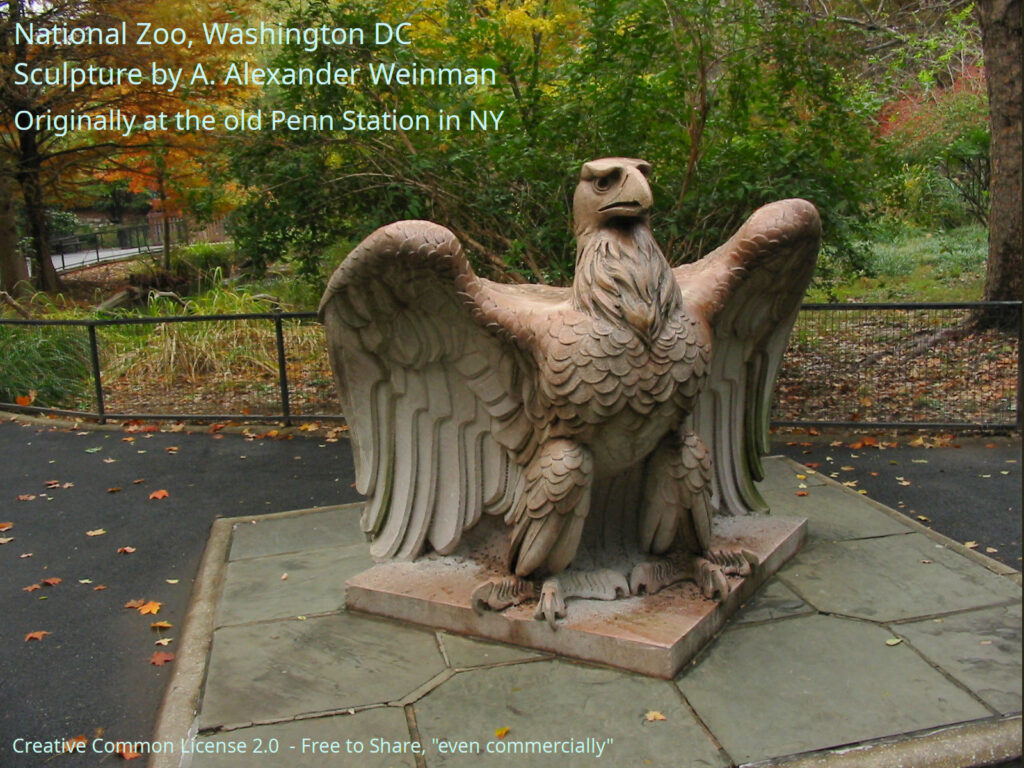
Designed by A. Alexander Weinman
The last year of Barber dimes was the same as the first year of Mercury dimes, 1916. Standing Liberty quarters and Walking Liberty half dollars were also introduced in 1916.
Both Mercury dimes and Walking Liberty half dollars were designed by A. Alexander Weinman. He was born in 1870 and died in 1952. During the mid to late 1890s, Weinman worked for Augustus Saint Gaudens, the greatest sculptor in the history of the United States. Saint Gaudens designed Indian Head $10 gold coins and the most famous $20 gold coins (1907-33).
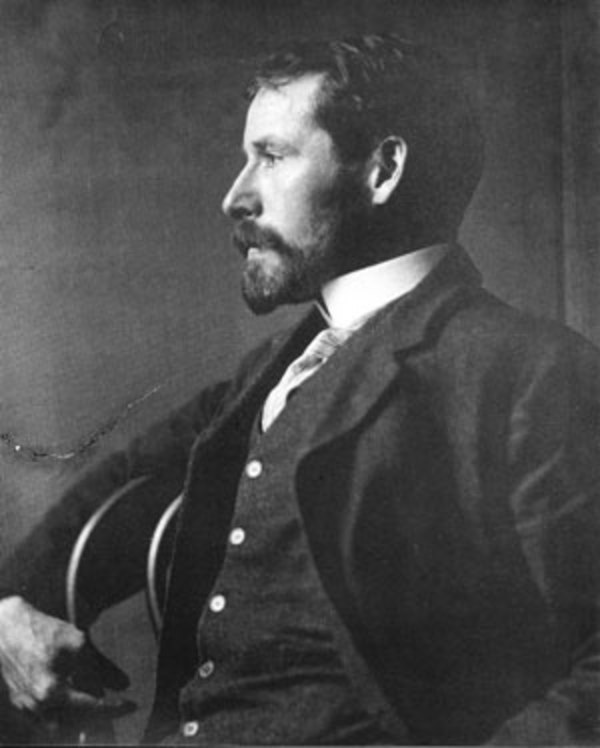
In addition to coins, Weinman designed a large number of medals, sculptures, plaques and monuments. During the twentieth century, his works were often seen at government office buildings, train stations and public parks. Coin collectors tend to like the medals that he designed for the Louisiana Purchase Exposition of 1904, a “World’s Fair” in St. Louis, Missouri. A Weinman designed Louisiana Purchase Expo award medal in copper could probably be purchased for less than $400.
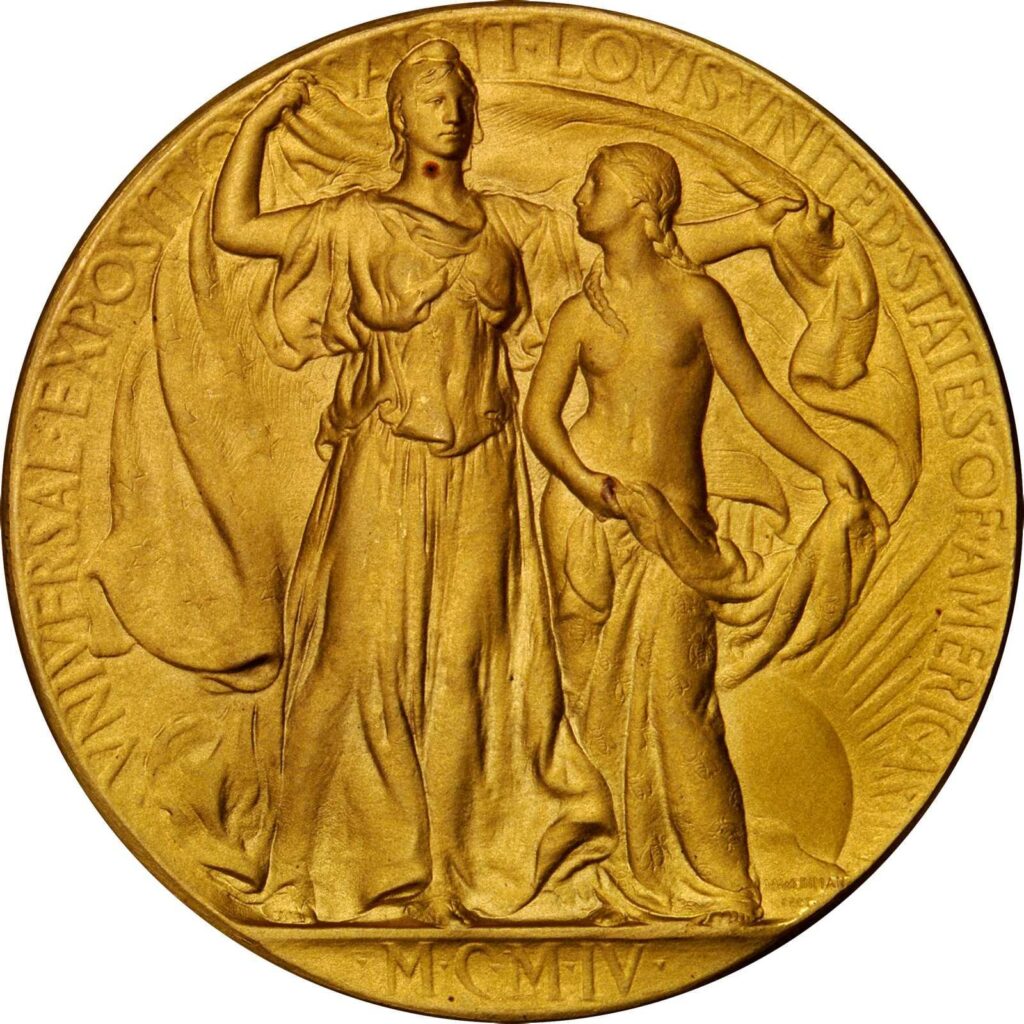
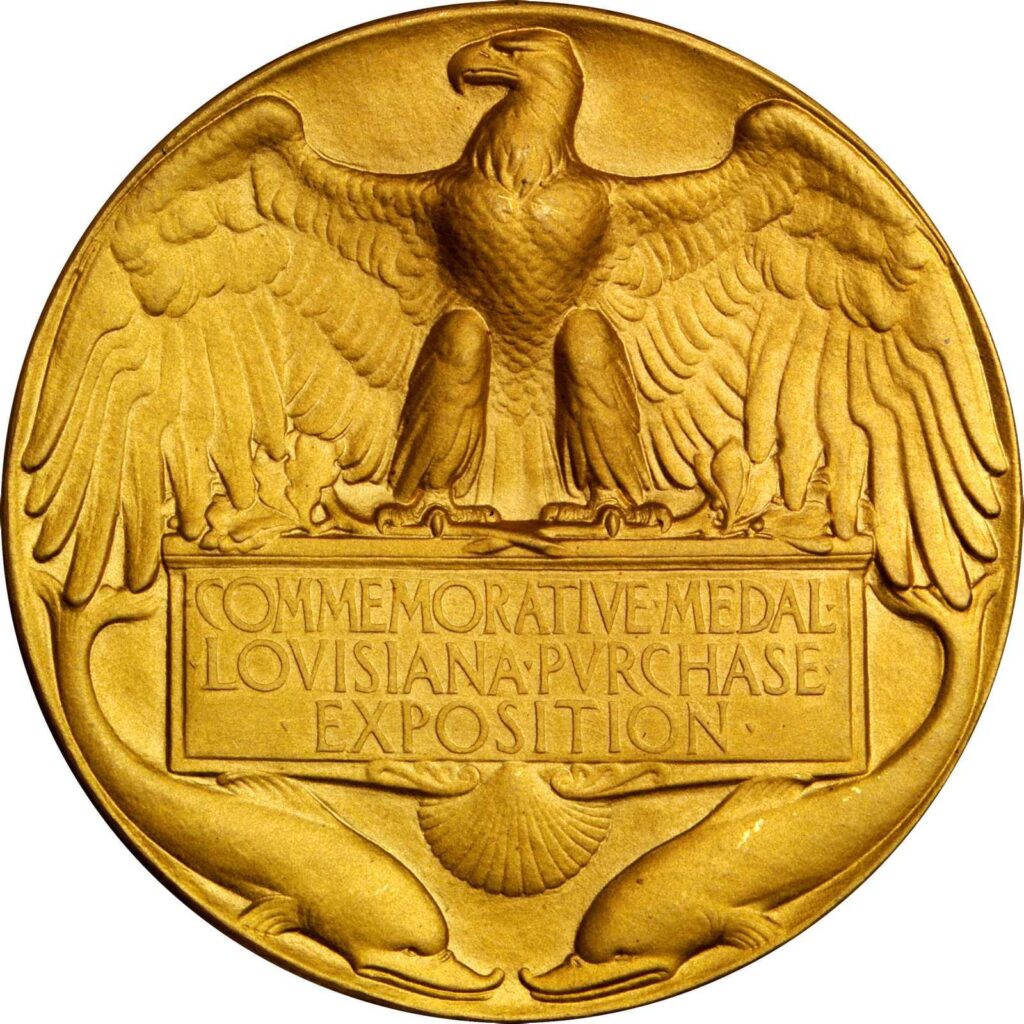
Information about the artistic concept of the ‘Mercury Dime’ may be found in an article that was published in 2014. The theme here is assembling a set ‘by date’ (and mint location) of Choice to Gem quality Mercury dimes.

Collecting By Date
It is better to acquire several other dates before seeking the key and the semi-keys. Collectors tend to learn while collecting, and will attain a better understanding of Mercury dimes while seeking them.
The 1916 Philadelphia Mint Mercury dime is not a common date. It is a somewhat better date. The CPG-CAC medium retail estimate for a MS-64 grade 1916 is or was $140 in August 2024. On Jan. 14, 2024, GreatCollections sold a CAC approved MS-66 grade 1916 for $313.50.
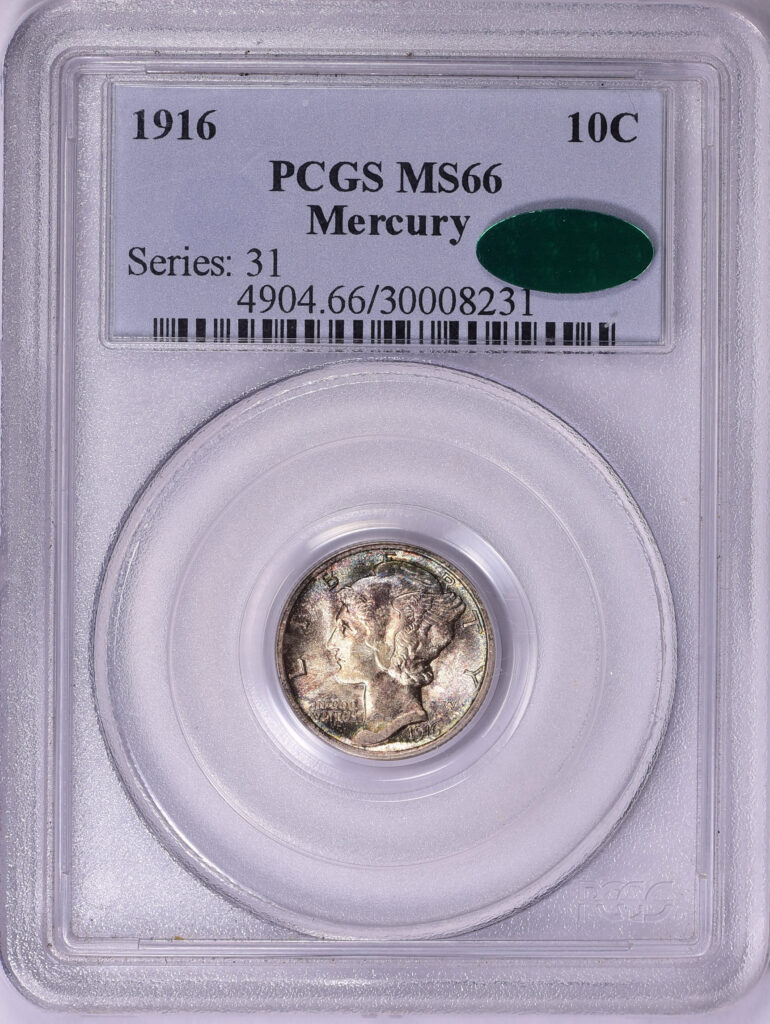
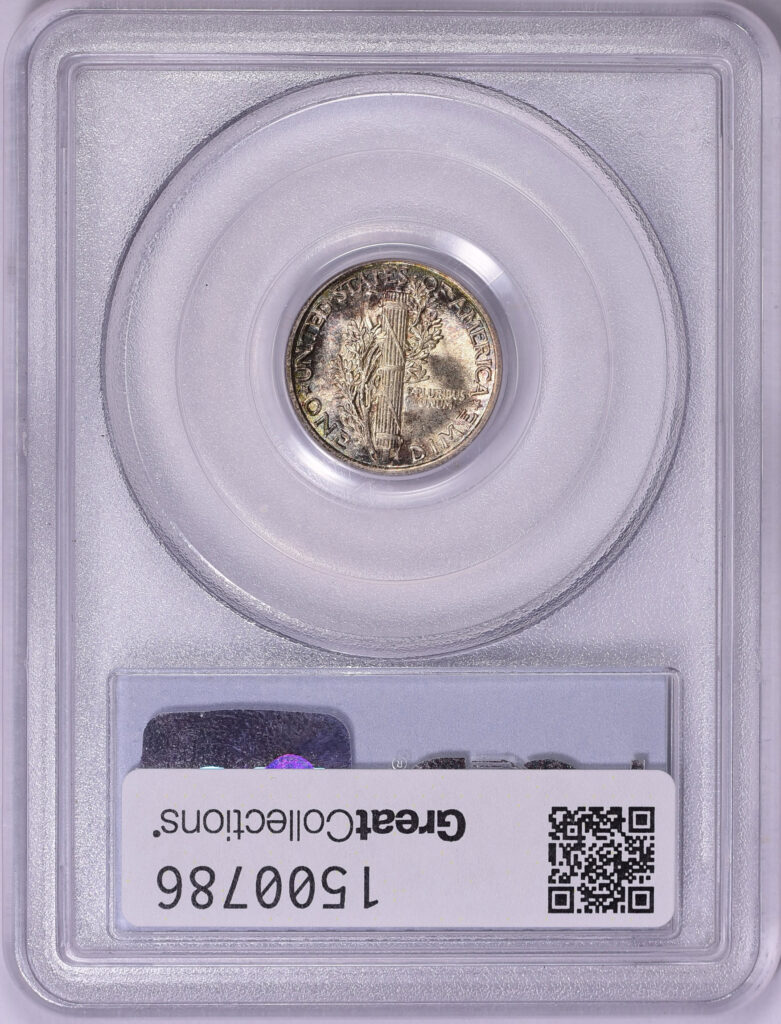
For only a small fraction of the cost of an equivalent 1916-D, a collector can buy a 1916-S for a modest amount. The CPG-CAC retail estimate for a MS-63 grade 1916-S was $135 in August 2024. On April 2, 2024, Stack’s Bowers auctioned a CACG graded MS-63 1916-S with a ‘Full Bands’ (FB) designation for $216.
Most certified Choice to Gem Uncirculated 1917 dimes are designated as having ‘Full Bands’ (FB). The CPG-CAC medium retail estimates are $185 for a MS-63-FB 1917 and $250 for a CAC approved MS-64-FB 1917.
The 1917-D is a CAC certification rarity in MS-63 and higher grades. Although it is possible to buy one for around $300, a collector might wish to figure at least $900 in his or her budget for a 1917-D, as it might be easier to find a MS-64 or -65 grade 1917-D than a CAC approved MS-63 grade 1917-D. Although a CAC approved MS-63 grade 1917-S might likewise be very hard to find, MS-64 and higher grade 1917-S Mercs are much more plentiful than 1917-D Mercury dimes in this same grade range. On Dec. 31, 2023, GreatCollections sold a CAC approved MS-65 grade 1917-S for $435.60.
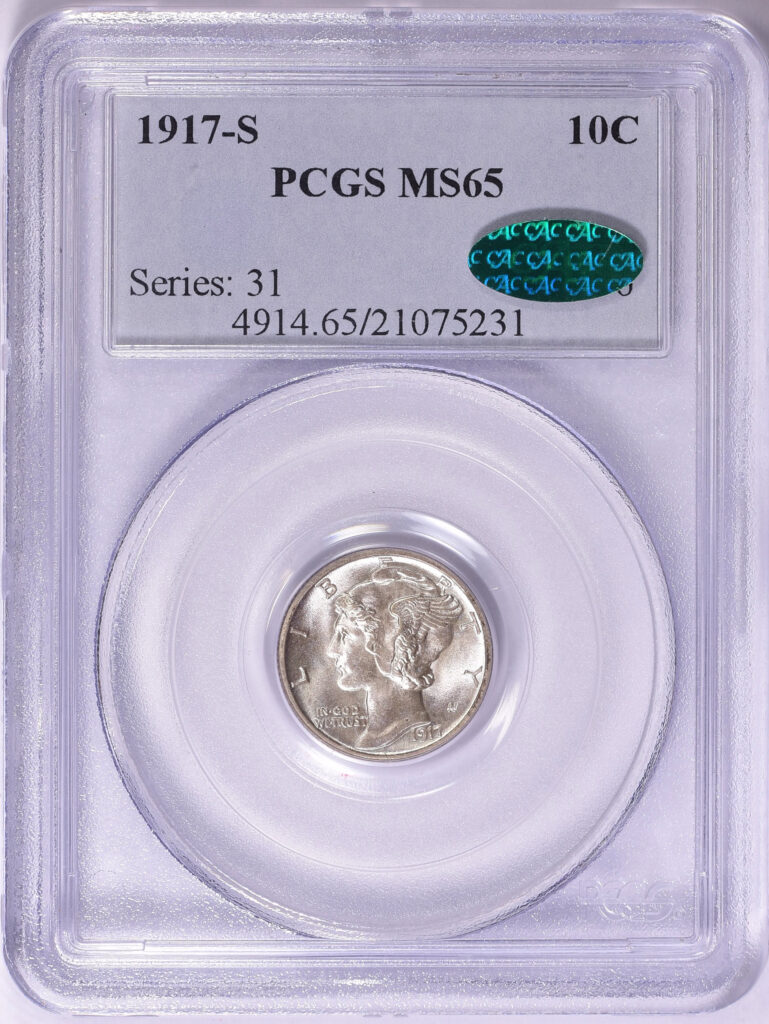
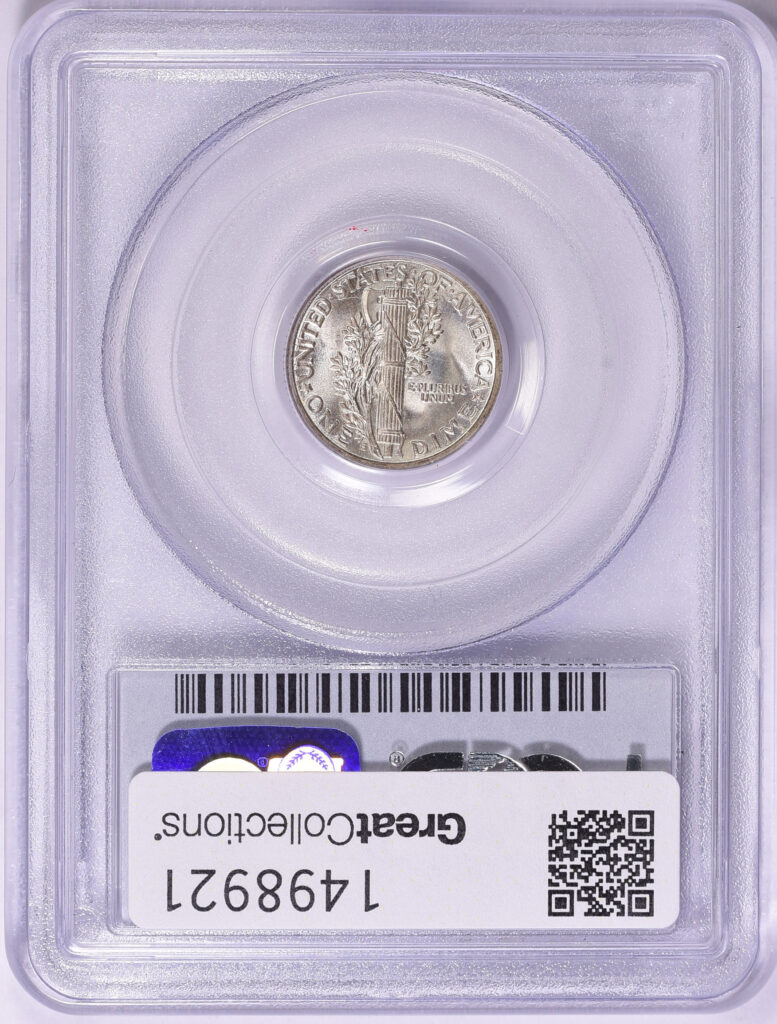
Although I would recommend that a budget-minded collector seek a 1918 without a ‘FB’ designation, the vast majority of certified MS-63 and higher grade 1918 Mercs have a ‘FB’ designation. Most 1918 Philadelphia Mint dimes were struck with ‘full bands’ (FB).
It is a realistic possibility that a CAC approved MS-64 grade 1918 could be purchased for a price in the range of $400 to $650, though patience might be required. Back in August 2010, Stack’s Bowers sold a CAC approved MS-64-FB 1918 for $480.
Full bands (FB) or not, the 1918-D is an unheralded condition rarity in MS-63 to MS-65 grades. I maintain the data in the population reports of grading services include multiple counts of many of the same individual coins. CAC approved 1918-D Mercs are not seen often.
The 1918-S is not as elusive as the 1918-D. MS-64 to MS-66 grade 1918-S dimes are around. On June 23, 2024, GreatCollections sold a CAC approved MS-64 grade 1918-S for $609.28.
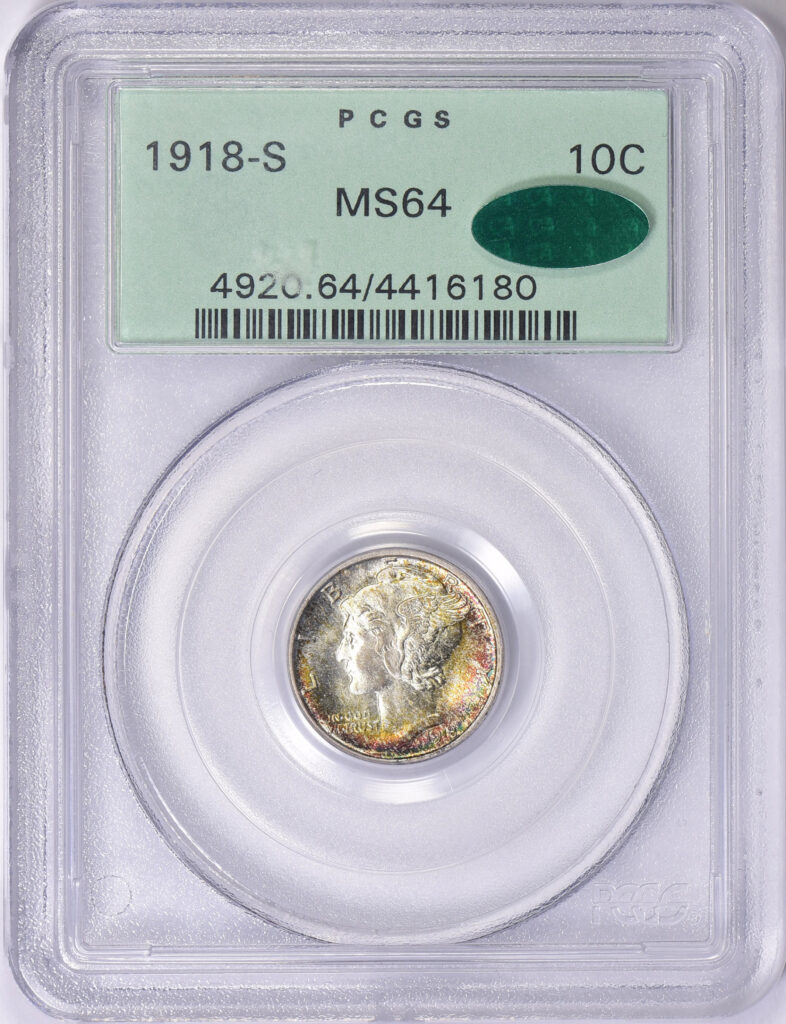
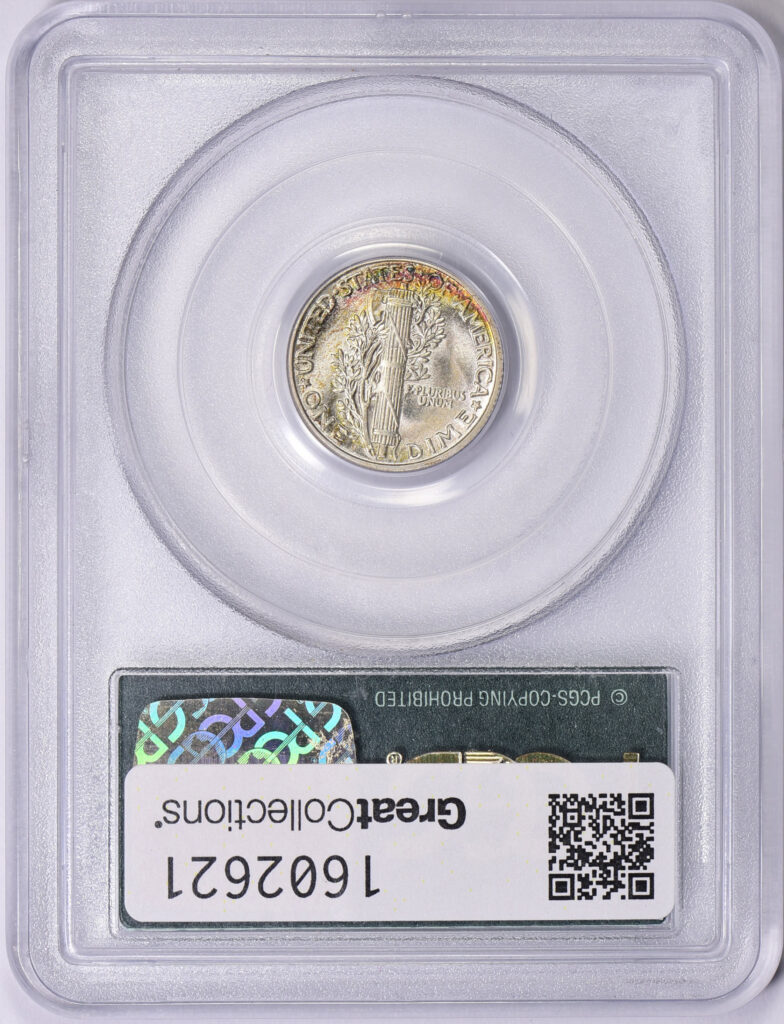
It is true that the 1918-D has a larger mintage, 22.7 million, than the 1918-S, 19.3 million. It is impossible to know, though, how many were worn down in circulation and eventually melted. For Mercury dimes, there is not a very high correlation between mintage figures and the number that survive now in MS-63 and higher grades.
Back on Oct. 19, 2022, GreatCollections sold a CAC approved, NGC graded MS-65 1919 for $396. As are 1919-D and the 1919-S Standing Liberty quarters, Choice to Gem Uncirculated 1919-D and 1919-S dimes are very expensive. I strongly suggest attempting to purchase representatives of these dates that do not have a ‘FB’ designation.
On March 1, 2020, GreatCollections sold a CAC approved AU-58 grade 1919-D for $237.60. On Feb. 14, 2021, GreatCollections sold a CAC approved, NGC graded MS-64 1919-D dime for $865.70. If that 1919-D had been designated as having ‘Full Bands,’ it would have sold for an amount in the range of $3750 to $5750.
On Nov. 12, 2020, Stack’s Bowers auctioned a CAC approved MS-65 grade 1919-D for $2040. That was a strong price then and would be in August 2024, too. A CAC approved MS-65 grade 1919-D with an ‘FB’ designation would probably cost fifteen to twenty times as much as a very similar coin without ‘Full Bands’!
For the 1919-S, the CPG-CAC retail estimate for a certified MS-65-FB coin was $25,900 in August 2024, yet was only $2400 for a CAC approved MS-65 grade 1919-S without a ‘FB’ designation, less than one-tenth as much! For key, semi-key and most ‘better date’ Mercury dimes, in MS-63 to MS-66 grades, it makes logical sense to consider coins that do NOT have ‘FB’ designations, and significant sums may be saved.
A run from 1916 to 1919 ‘by date’ (and mint location) is not particularly expensive, except for the 1916-D. Generally, the 1916-D is the most expensive Mercury dime in grades from Good-04 to MS-66. I suggest that budget-minded collectors complete most of a set ‘by date’ before purchasing a 1916-D. It is important to learn about the respective series of coins before spending most of a budget for a collecting project.
Also, for some collectors, a MS-64 grade coin will be almost as appealing, or sometimes more appealing than a MS-66 grade coin, while others will insist upon gems and not even consider MS-64 grade coins. Regarding a set of Mercury dimes or any other set, there is no rule that applies to all collectors.
Images of coins are shown courtesy of GreatCollections and Stack’s Bowers Galleries.
Copyright © 2024 Greg Reynolds
About the Author
Greg is a professional numismatist and researcher, having written more than 775 articles published in ten different publications relating to coins, patterns, and medals. He has won awards for analyses, interpretation of rarity, historical research, and critiques. In 2002 and again in 2023, Reynolds was the sole winner of the Numismatic Literary Guild (NLG) award for “Best All-Around Portfolio”.
Greg has carefully examined thousands of truly rare and conditionally rare classic U.S. coins, including a majority of the most famous rarities. He is also an expert in British coins. He is available for private consultations.
Email: Insightful10@gmail.com
